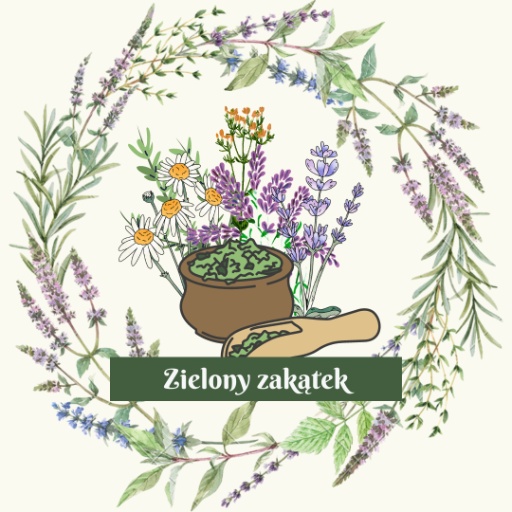Common lavender and its broad application
Common lavender, also known as Lavandula angustifolia, is an herb with extraordinary healing and aromatic properties. For centuries it has been used in natural medicine and the cosmetic industry, bringing numerous health and relaxation benefits to people around the world.
Coming from Mediterranean regions, common lavender is one of the oldest and most highly valued medicinal plants. The ancient Egyptians, Greeks, and Romans used it in medicine and for aromatherapy purposes. Its name "lavender" comes from the Latin word "lavare," which means "to wash," indicating the frequent use of this plant in the preparation of perfumes and cleaning agents.
Chemical composition and medicinal properties
Common lavender contains a variety of chemical components, including essential oils, flavonoids, tannins, coumarins, and other active compounds. Lavender essential oil, the main component of this plant, exhibits strong antibacterial, antifungal, anti-inflammatory, and relaxing properties. Therefore, common lavender is used in the treatment of many health conditions, such as:
- Skin problems: It has soothing and anti-inflammatory effects on the skin, so it is often used in the treatment of acne, psoriasis, or sunburns.
- Respiratory system issues: Inhalation of lavender essential oil can help alleviate symptoms of colds, sinusitis, or asthma.
- Tension and stress: Aromatherapy using lavender can be an effective method for reducing nervous tension, stress, and insomnia.
- Headaches: It has pain-relieving properties, which can provide relief for people suffering from migraines or tension headaches.
- Digestive problems: It helps to alleviate stomach and intestinal discomfort, such as bloating, indigestion, or colic.
Methods of use
Common lavender can be used in many ways. The most common methods include:
- Aromatherapy: Lavender essential oil can be added to baths, diffusers, or massages to achieve relaxing and calming effects.
- Topical application: Ointments, creams, or lotions containing lavender oil can be directly applied to the skin to alleviate various skin issues.
- Inhalations: Adding a few drops of lavender essential oil to hot water and inhaling the steam can provide relief in case of respiratory infections.
Contraindications and precautions
Although common lavender is considered a relatively safe plant, there are certain contraindications and precautions that should be taken into account. It is not recommended to use lavender oil in people allergic to this plant and in pregnant and breastfeeding women without consulting a doctor. Before use, it is also important to check if a product containing lavender does not cause allergic reactions.
In addition to medicinal use, lavender is also used in cooking by adding it to dishes or drinks. It is also a good way to get rid of moths in the closet. Just hang a bunch of lavender on a hanger and place it in the closet to get rid of unwanted guests.
Do you use lavender?
Common lavender, also known as Lavandula angustifolia, is an herb with extraordinary healing and aromatic properties. For centuries it has been used in natural medicine and the cosmetic industry, bringing numerous health and relaxation benefits to people around the world.
Coming from Mediterranean regions, common lavender is one of the oldest and most highly valued medicinal plants. The ancient Egyptians, Greeks, and Romans used it in medicine and for aromatherapy purposes. Its name "lavender" comes from the Latin word "lavare," which means "to wash," indicating the frequent use of this plant in the preparation of perfumes and cleaning agents.
Chemical composition and medicinal properties
Common lavender contains a variety of chemical components, including essential oils, flavonoids, tannins, coumarins, and other active compounds. Lavender essential oil, the main component of this plant, exhibits strong antibacterial, antifungal, anti-inflammatory, and relaxing properties. Therefore, common lavender is used in the treatment of many health conditions, such as:
- Skin problems: It has soothing and anti-inflammatory effects on the skin, so it is often used in the treatment of acne, psoriasis, or sunburns.
- Respiratory system issues: Inhalation of lavender essential oil can help alleviate symptoms of colds, sinusitis, or asthma.
- Tension and stress: Aromatherapy using lavender can be an effective method for reducing nervous tension, stress, and insomnia.
- Headaches: It has pain-relieving properties, which can provide relief for people suffering from migraines or tension headaches.
- Digestive problems: It helps to alleviate stomach and intestinal discomfort, such as bloating, indigestion, or colic.
Methods of use
Common lavender can be used in many ways. The most common methods include:
- Aromatherapy: Lavender essential oil can be added to baths, diffusers, or massages to achieve relaxing and calming effects.
- Topical application: Ointments, creams, or lotions containing lavender oil can be directly applied to the skin to alleviate various skin issues.
- Inhalations: Adding a few drops of lavender essential oil to hot water and inhaling the steam can provide relief in case of respiratory infections.
Contraindications and precautions
Although common lavender is considered a relatively safe plant, there are certain contraindications and precautions that should be taken into account. It is not recommended to use lavender oil in people allergic to this plant and in pregnant and breastfeeding women without consulting a doctor. Before use, it is also important to check if a product containing lavender does not cause allergic reactions.
In addition to medicinal use, lavender is also used in cooking by adding it to dishes or drinks. It is also a good way to get rid of moths in the closet. Just hang a bunch of lavender on a hanger and place it in the closet to get rid of unwanted guests.
Do you use lavender?
6 users upvote it!
2 answers
